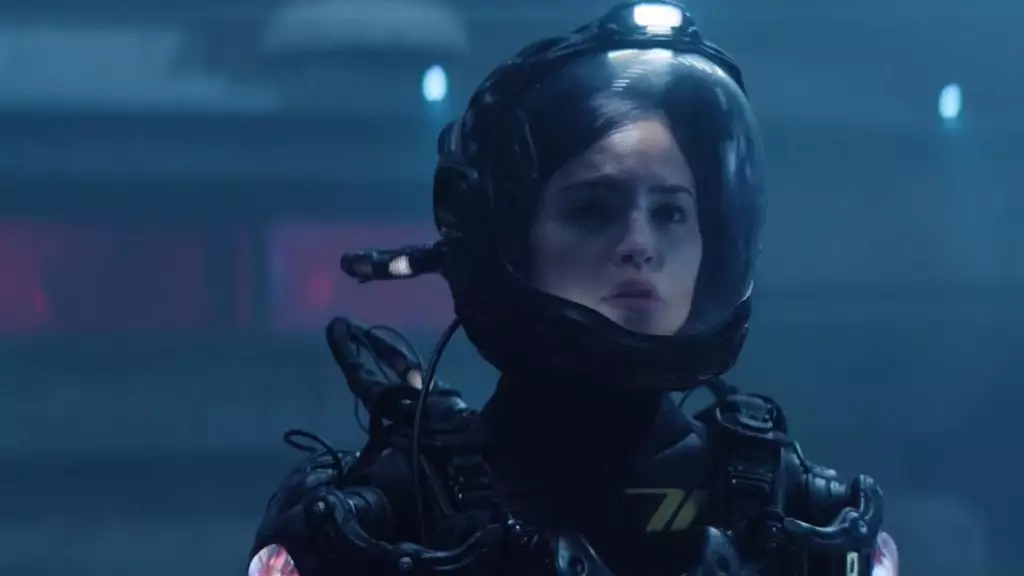The world of cinema, particularly the genre of science fiction, often teeters on the edge of the absurd and the profound. Flying Lotus’ debut feature, Ash, is no exception. The film begins with a haunting image: astronaut Riya, played with captivating intensity by Eiza González, awakening on an alien planet. Unlike other sci-fi narratives that slowly build their worlds, Ash plunges its audience into a blood-soaked mystery. This immediate disorientation reflects the chaos of human existence itself, as Riya grapples with an amnesiac past, similar to the broader human experience of forgetting our own violent histories in the rush to explore and conquer new frontiers.
Colonization and Chaos: A Grim Reflection
At the heart of Ash lies a provocative commentary on the dark legacy of colonization. Riya’s quest for survival on this alien world is tinged with metaphorical resonance regarding humanity’s frequent history of invading lands that weren’t meant for them. The first few scenes, laden with tension and horror, serve as a microcosm of a larger societal issue: how disinformation and radicalization often motivate conflicts between disenfranchised groups. Riya, in her isolated state, finds herself recounting idealistic notions of unity that starkly contrast with her grim reality—a reality shaped by past encounters with colonizers that should have taught humanity a lesson but instead slip into oblivion. As she reflects, “Let’s not f*ck it up this time,” it becomes apparent that creators like Flying Lotus are attempting to warn us against repeating our destructive patterns.
Visuals and Sound: The Language of Horror
The visual aspect of Ash is striking. Lotus’s background as a music producer enhances not only the score but the entire atmosphere of the film. Electronic rhythms intertwine with haunting visuals that replicate the desolation of space. The choice of a technicolor palette juxtaposed against the starkness of an alien landscape evokes a sense of awe akin to gazing into the abyss. However, mixed within this beauty is a deliberate confusion—AI-generated effects blend harmoniously with real-world imagery, making it hard to discern where dream ends and nightmare begins. It’s a bravura execution, transforming the experience into an agonizing dance between reality and illusion.
Homage and Innovation: Entering a New Era of Horror
While Ash pays its respects to iconic films like Alien and The Thing, it transcends mere homage. Lotus masterfully intertwines nods that will thrill horror aficionados while asserting his own narrative voice. The stylistic choices evoke a sense of nostalgia without falling victim to mimicry. As Riya fights her unseen adversary, the visuals resonate with the discomfort inherent in confronting our collective fears—fears that may very well stem from our dreams of expansion and discovery turned wrong. The film effectively utilizes its roots to ground the horror while branching out into uncharted territories, a reflection of where humanity may be heading.
In Ash, Flying Lotus doesn’t just invite us to witness horror; he forces us to examine it within ourselves. In the cosmos of the unknown, the real terror lies not with the extraterrestrial, but in the reflection of humanity’s refusal to remember its past and learn from it.


Leave a Reply